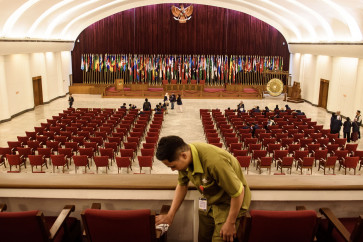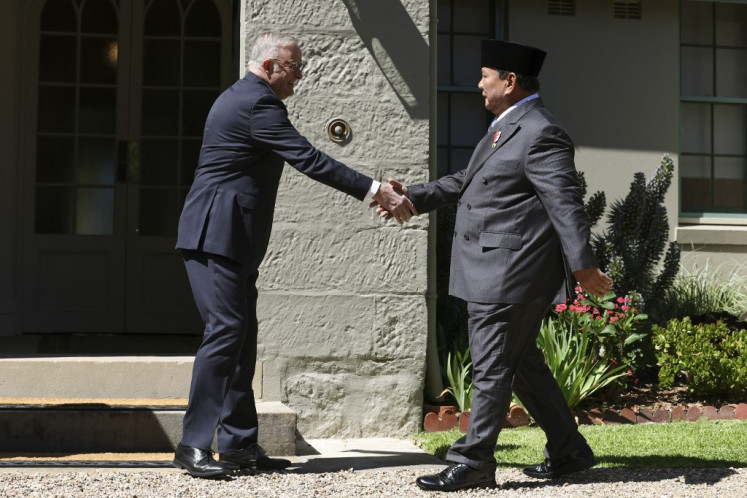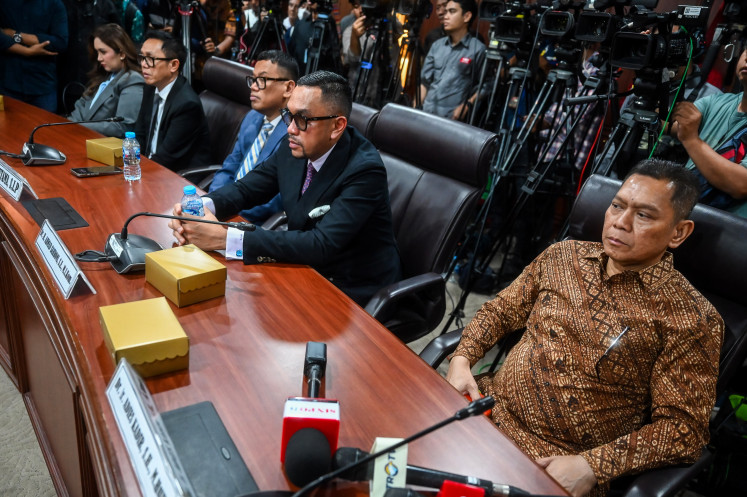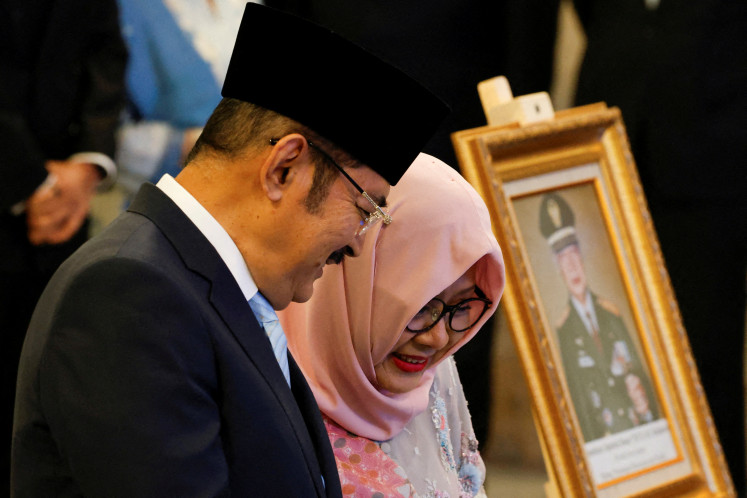Popular Reads
Top Results
Can't find what you're looking for?
View all search resultsPopular Reads
Top Results
Can't find what you're looking for?
View all search resultsRegarding the beans: Third-wave coffee hits home
Meticulous: Women sort beans at Oro Coffee Gayo in Central Aceh regency on June 28
Change text size
Gift Premium Articles
to Anyone
Meticulous: Women sort beans at Oro Coffee Gayo in Central Aceh regency on June 28. (Antara/Ampelsa)
Amid the blossoming of cafes driven to serve better-than-good java at home, Indonesians are experiencing a flavor revolution, leaving black and bitter behind.
As quality coffee awareness in big cities like Jakarta, Bandung, Makassar and Bali has spread, people are now looking for sculptured flavors ' the result of better beans as well as specific roasting and brewing techniques at coffee houses.
The local community has submitted to the global third-wave coffee movement, which regards coffee as a drink as fine as wine. Its origin ' the soil, temperatures and altitudes where it grows ' and flavor ' from sweet to umami ' are appreciated.
The amount of coffee consumed has increased in general, reaching average coffee consumption of 0.94 kilograms per capita in 2012, according to the Indonesian Coffee Exporters Association (AEKI).
In many coffee-producing powerhouses such as Sumatra and Java, farmers have started to taste their crops properly, resulting in modern coffee houses splurging in Takengon, Aceh to Makassar, South Sulawesi. Coffee is only dried and roasted with coffee, not corn or rice grains, as once taught to the farmers.
'The education given at a specialty cafe to consumers opens the eyes of roasters [and other players in the industry]. We can see [the market] now shifting with a focus on appreciating quality. If we talk about quality, coffee is coffee, not blended with corn,' said Eko Purnomowidi, the frontman of Klasik Beans, a cooperative that assists farmers with growing fine Arabica in West Java and Bali.
Muhammad 'Agam' Abgari, one half of the duo behind the Anomali Coffee franchise that pioneered in introducing high-quality Indonesian beans to the local market, observed that the trend still put Indonesian beans ' famed for its rich, full body and low acidity under the spotlight.
'We are seeing more and more varieties of Indonesian beans and we can find them everywhere,' he said.
A significant global producer since the 18th century, Indonesian farmers barely knew the taste of their own coffee as most of their products were shipped to Europe. The consumption culture built in society put less regard on the beans with common serving methods such as tubruk ' where the coffee is heavily roasted resulting in a burned, bitter taste ' and kopitiam ' a method in which coffee is brewed through a steep metal pot with a cotton sock filter and served with sweetened condensed milk. Beans are roasted with oil, margarine and sugar. Both typically use Robusta.
Indonesia has sustained its dominance as the world's third-largest producer, producing about 80 percent Robusta in 2012. The tradition of embracing the bitterness of coffee continues, as most still have their coffee black if not served from sachets.
The excitement for specialty coffee ' commonly identified with Arabica, however, places an importance on the beans.
Nathalia Gunawan, an owner of One-Fifteenth Coffee shop and Morph Coffee roaster, said it has now become widely known that coffee can be one sole exquisite item, without adding sugar, syrup or other flavors. 'People are beginning to appreciate coffee's own unique characters and are more curious about them,' she said. She is optimistic that the Indonesian specialty coffee industry at home would grow larger in the future.
'One main problem is we need more trained farmers in terms of picking and processing coffee cherries to quality green beans. We can if we want to but it's going to take effort,' she said.
Uji Sapitu, a roaster and an owner of Rumah Kopi Ranin, said appreciating the beans will bring out the best of coffee, even for Robusta, which is now used for mass production.
Also known as an R-grader that certifies fine Robusta, he said bitterness is also not desired in Robusta, although it requires a higher roasting temperature than Arabica.
'Coffee of any type requires a good ecosystem, as well as good picking and post-harvesting techniques. Current methods are much influenced by an industry that requires quality consistency in great volume,' he said.
Uji said good beans still stand out even in tubruk ' the basic way to serve coffee.
'If the beans are not burnt out or overly grinded, it won't taste bitter.'
Agam said that despite the knowledge gap between farmers and roasters in terms of quality beans, things have started to improve.
'Farmers are more willing to change their old ways, roasters and baristas are more excited about the business and coffee drinkers are accepting that high-quality coffee is not cheap,' Agam said.
The average price for a cup of specialty at cafes in Greater Jakarta is Rp 22,000 (US$1.83), or equals to almost four liters of gasoline.
Nathalia said that high-quality coffee would remain to be something only the middle and upper class could afford.
'It's not about being an elitist, but it's about the reality that high-quality coffee has high production costs,' she said.










